Adobe Primrose: Interactive Dress that Changes Patterns
What if your dress could change its look in seconds? Not by taking it off or adding anything new - just one tap and the pattern or
colour shifts right in front of your eyes. That's exactly what
Adobe Primrose does. First shown at Adobe MAX 2023, this smart dress quickly went viral. Christine Dierk, a researcher at Adobe, walked on stage wearing it. And just like that, the fabric began to change. Shapes moved. Colours shifted. The dress turned into something completely new.
So, why is this a big deal? Because for the first time, clothes are no longer stuck in one design. With Primrose,
fashion becomes dynamic. The dress acts like a screen, but it's real fabric. It can show different patterns, styles, and even animations - all without changing the actual outfit.
This marks a major shift in fashion. From fixed styles to interactive
clothing. From wearing what you have, to wearing what you want it to become.
What is Adobe Primrose?
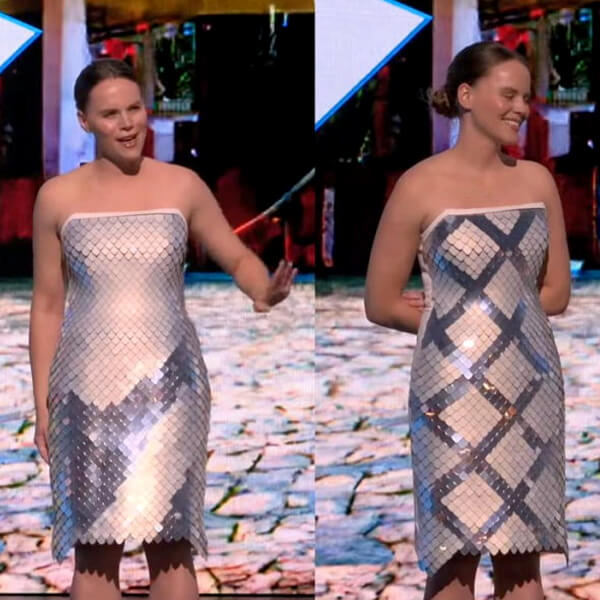
Adobe Primrose is a special kind of dress that can change how it looks while someone is wearing it. It's just a prototype for now, but it's very smart and high-tech. The dress is made with 1,182 tiny petals that look like shiny sequins. These petals are not normal fabric - they are made from something called PDLC, which stands for polymer-dispersed liquid crystals. Each petal can change its look when a small electric signal is sent to it.
What makes this dress different is that it doesn't use lights or screens. Instead, it reflects and softens natural light. This type of fabric is known as non-emissive and works more like a mirror or a light filter. It changes its colours, patterns and style by simply adjusting how much light it lets through. Flexible wires inside the dress help control all the petals. So, with one small signal, the whole dress can shift from one design to another in seconds. For example, it might show soft waves at one moment and sharp shapes the next. Adobe Primrose shows us a new way fashion and technology can come together. One dress, many looks...
The Inspiration & Evolution of Adobe Primrose
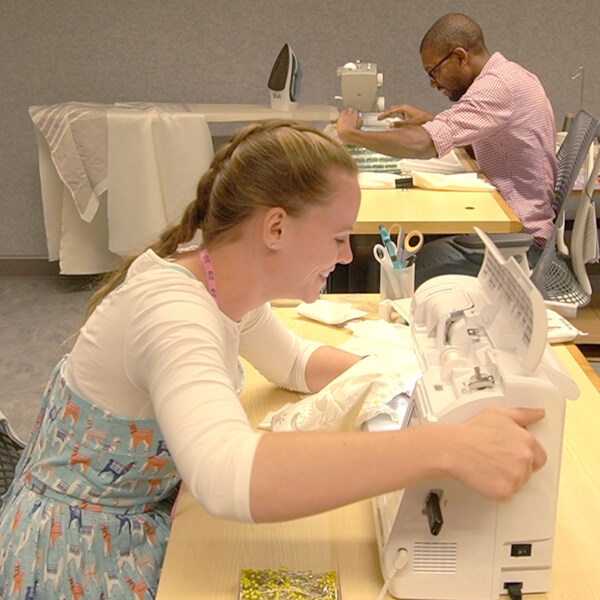
The idea behind Adobe Primrose goes back to 2013. That's when Adobe came up with something called the vision
sweater. It was an early concept where clothing could change looks, kind of like a screen. This idea planted the seed for what was to come. Soon after, Adobe created Glasswing - a smart handbag that could change its colour. It was a small step, but it showed that moving designs on fabric was actually possible.
Over time, the team kept testing. They began with simple materials like canvas, then moved on to wearable items like handbags. Slowly, they brought the idea into full clothing. In 2022, at the UIST conference, Adobe finally showed the first version of Primrose - a dress that could change patterns and colours with the help of technology.
Then in 2023, at Adobe MAX, the full version was revealed. This time, it was much more advanced. The dress didn't just look pretty - it moved, shifted, and responded to digital controls. From a sweater to a smart dress, it's been a steady journey - full of small steps, big ideas, and clever design.
Engineering and Craftsmanship Behind the Dress
The Adobe Primrose dress looks stunning, but what makes it special is the smart work behind it. It's a mix of clever engineering and neat handwork that brings the whole thing to life.
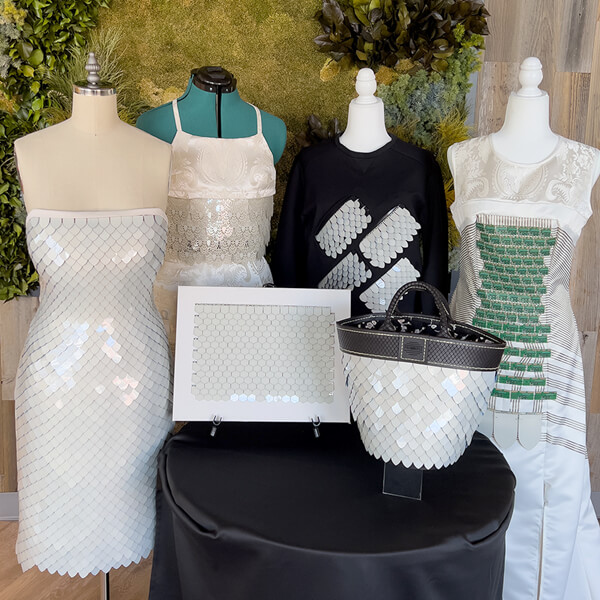
- Smart Hardware Inside - The dress has very thin and bendy circuits that sit under the petals. These circuits help the dress change how it looks. It uses something called PDLC tech, which allows each petal to switch patterns, glow, or become see-through. There are 74 small boards inside the dress that control this action. It runs on a battery and connects with Bluetooth. That means someone can change the design of the dress using a phone or tablet.
- Carefully Designed Petals - The petals come in 16 different sizes. Each one is planned on a computer using Adobe Illustrator. Every petal has its own spot, so the dress looks smooth and even when it moves. Even though the design is made using tech, the petals are stitched by hand. It's done with a method like paint-by-number, so each part is placed exactly where it belongs.
- Powerful Software - The software part is just as important. Patterns are made using Illustrator, animated in After Effects, and even created with Firefly. Once the design is ready, it's sent straight to the petals.
Interactive Features in Action
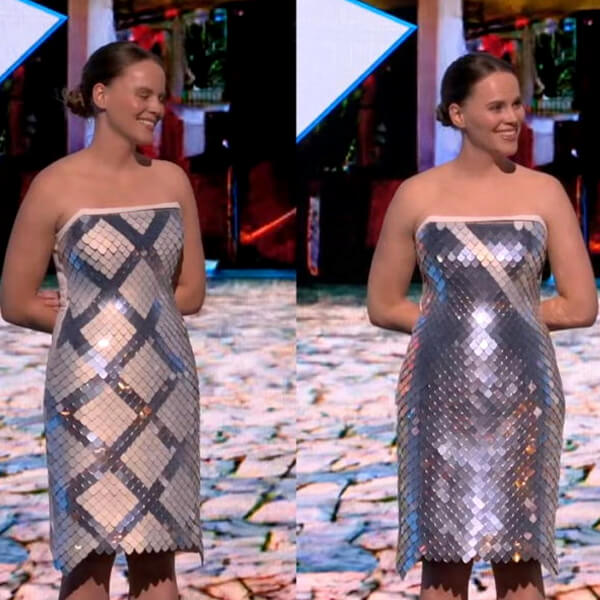
- Dress that Changes with a Tap - The Adobe Primrose is no ordinary dress. It can change patterns and colours in real time. With just a button press or a simple move, the whole look of the dress shifts. It's smooth, quick and really eye-catching.
- Patterns that Move With You - You can switch designs by moving your body or tapping a button. Turn slightly, and the dress reacts. Patterns flow and change right in front of your eyes. The colours also shift - sometimes soft and clear, and other times shiny silver. It all depends on the light and the setting.
- Smart Sensors Inside - The dress has tiny sensors hidden in the fabric. These sensors track your movement. They are linked to a Bluetooth chip that connects to your phone. You can open the app and pick from different looks. It's easy to use, with simple buttons and previews.
- Looks Like Magic, Feels Like Normal - Even with all the tech inside, the dress feels light and natural. There are no wires or heavy parts. Just smooth cloth that quietly reacts to you. It looks like magic, but it works with simple tools.
The Big Reveal that Got Everyone Talking
Adobe Primrose made its first appearance at Adobe MAX events in places like Los Angeles, Japan, New York City and Spain. Actress Sofia Vergara wore the dress, and Christine Dierk, who helped create it, stood beside her. As the dress changed its colours and patterns live on stage, the crowd was amazed. Soon after, videos of the moment went viral. Millions watched it on TikTok and Reddit. People Magazine featured it. Fashion pages shared it everywhere. It quickly became one of the most talked-about outfits online.
But not everyone was fully impressed. Vogue
Business called the technology exciting but reminded readers that it is still a prototype. They said it looks great but may face problems when it comes to daily use or mass production. Even with those points, the public response was huge. The dress made headlines, got people talking and showed a new way of mixing fashion with technology.
Pros & Cons of Adobe Primrose
Let us keep it simple. Adobe Primrose is exciting, but it's not perfect. Here's what works - and what doesn't.
PROS
- A Creative New Way to Design Clothes
This dress acts like a blank screen where digital art comes alive. Artists and designers can change patterns using AI. It's a fresh mix of fashion and tech. - Ideas Beyond Clothing
It's not just about wearing it. This kind of smart fabric could be used in home decor too. Think of curtains, bedsheets or cushions that change patterns when you want.
CONS
- Still Just a Prototype
It's early days. Right now, there are no colours - only patterns. It's not ready for daily use. Things like how strong it is, how long it lasts, or if it's eco-friendly are still unknown. - Cost and Other Concerns
It might be expensive. If it breaks, fixing it could be hard. Also, who owns the design - the person wearing it or the one who created it? These are questions that need answers.
What's Next for Adobe Primrose?
Adobe Primrose is already a big step forward in fashion and tech. But Adobe has bigger plans for it. They are working on ways to make it even better.
- Better Colours, More Practical - The current version looks great, but Adobe wants to improve the colours. Their goal is to make the patterns look deeper and more natural. They are also working on a version that people can actually wear daily, not just models on a runway.
- Not Just Clothes - Adobe wants to take this idea beyond dresses. They are exploring how the same technology could be used on furniture, curtains, and other textiles. So in the future, your sofa or bedsheet could change its look just like the dress.
- Working with Top Designers - They ave already worked with fashion designer Christian Cowan to show off Primrose at Fashion Week. More such partnerships are expected, bringing new designs and fresh ideas to the project.
- Why this Matters - Primrose is more than just a cool dress. It could help reduce waste in fashion by offering many looks in one outfit. It also gives people new ways to express themselves through changing designs.
What Fashion Students can Learn from Adobe Primrose
- A new way of thinking - Adobe Primrose isn't just a dress. It's a smart outfit that changes its look using light and technology. For fashion students, it's a great example of how design is no longer just about clothes. It's about mixing craft with tech, software, and even science.
- Learn more than just fashion - This dress shows how different fields come together. To build something like Primrose, you need design skills, but also knowledge of electronics, coding, and materials. Fashion students can start learning how to work with people from other fields like tech and engineering.
- Using Digital Tools - Primrose uses generative AI and digital software to create new patterns. This means students can try out many design ideas on a screen before making the real thing. It saves time, reduces waste, and helps make better choices.
- Design with Care - Even with all the smart features, the dress still needs to be wearable. It should be comfortable, safe and easy to use. That's a big lesson - fashion must look good, but also work well in real life.
- A chance to explore new ideas - Adobe Primrose is a strong example of what's possible when fashion moves forward. It encourages students to try new tools, work with new teams and think beyond fabric and thread.
Primrose is not just a dress. It is a smart idea brought to life. A mix of technology and creativity that shows how fashion can do more than just look good. This dress changes patterns and designs. It reacts. It responds. It feels alive. That's what makes it special. Primrose is a reminder that clothes don't have to stay the same. They can change with your mood, your style, or even the moment. It's both a tech experiment and a creative message - showing us that fashion can be fun, flexible, and full of life. The future of clothing is here. And it's moving with us.
Frequently Asked Questions about
1. What is the Adobe Primrose dress?
It's a smart dress made by Adobe that can change its patterns and designs. The dress responds to light and touch, making it look different each time.
2. How does the dress change its look?
The dress has special panels made from a type of liquid crystal. These panels light up or fade based on signals from a small computer inside the dress.
3. Who made the Adobe Primrose dress?
It was made by Adobe's research team, led by Christine Dierk, with help from other designers and engineers.
4. Can I buy the Adobe Primrose dress?
No, it's not for sale right now. It's still in the testing stage and is made to show what's possible in the
future of fashion and tech.
5. What technology is used in the dress?
The dress uses flexible screens, tiny electric boards, sensors, and tools like Adobe Illustrator and After Effects to show moving patterns.
6. Can people create their own patterns for the dress?
Yes, you can design your own patterns using software. These designs can then be shown on the dress with the press of a button or a small gesture.
7. Why was this dress created?
It was made to explore new ideas in fashion. Adobe wanted to show how clothes can become smart and respond to your style or mood.
8. How many panels are on the dress?
There are 1,182 petal-shaped panels. Each one can light up or fade to show a part of the full pattern or animation.
9. Where was it first shown to the public?
The dress was first shown at a tech event called UIST 2022 and later became popular after the Adobe MAX 2023 event.
10. What could this type of dress be used for in future?
In the future, this tech could be used in everyday clothes, stage costumes, home decor, or even helpful clothing for people with special needs.

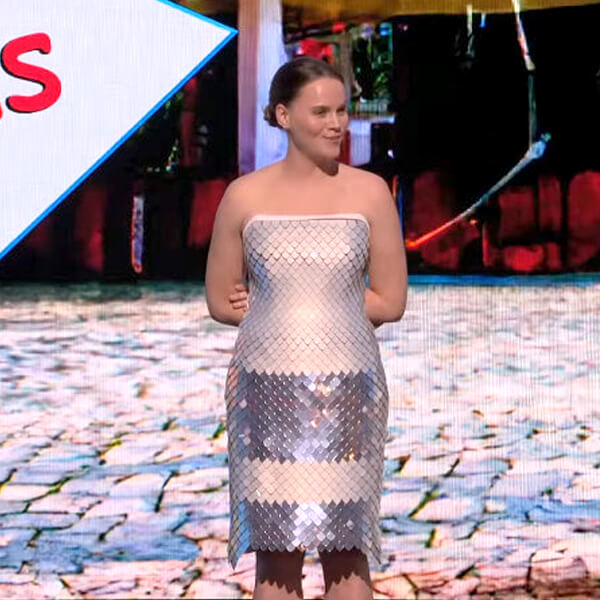





 CONTACT USWaves Institute of Fashion Designing,
CONTACT USWaves Institute of Fashion Designing,